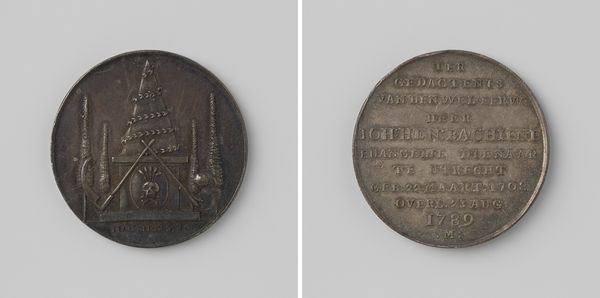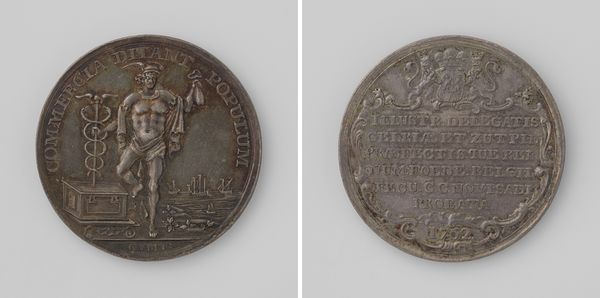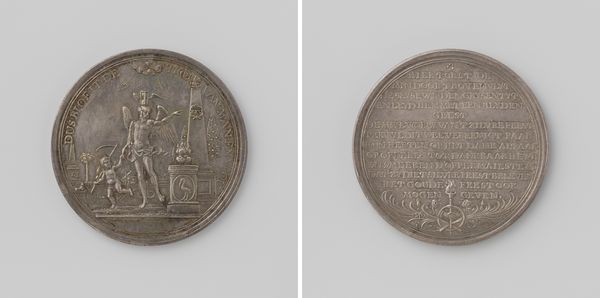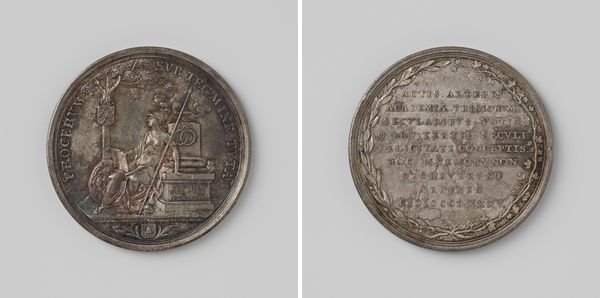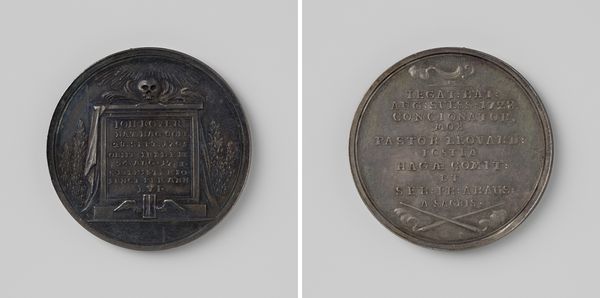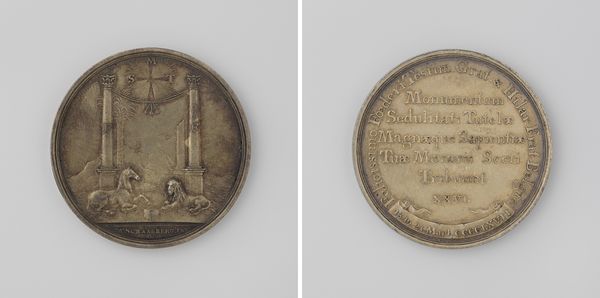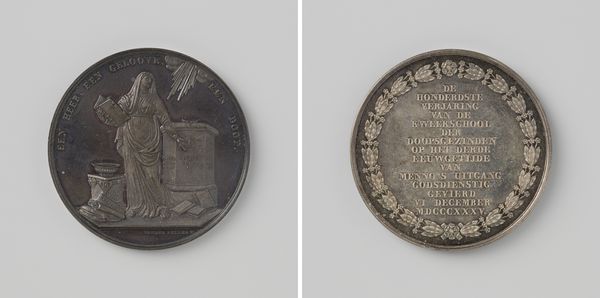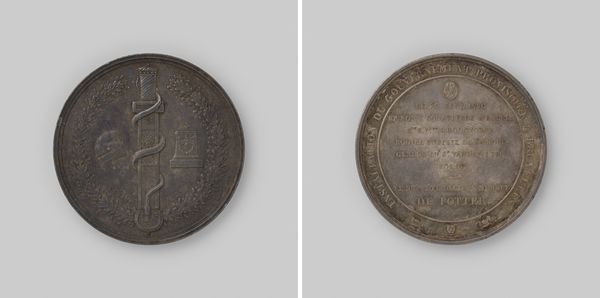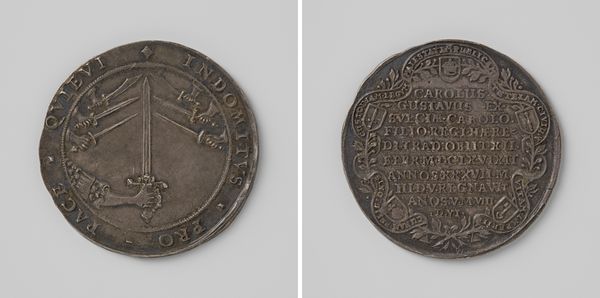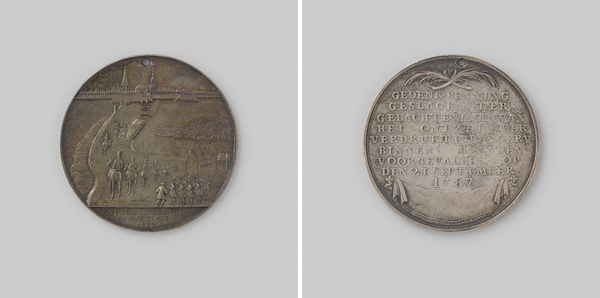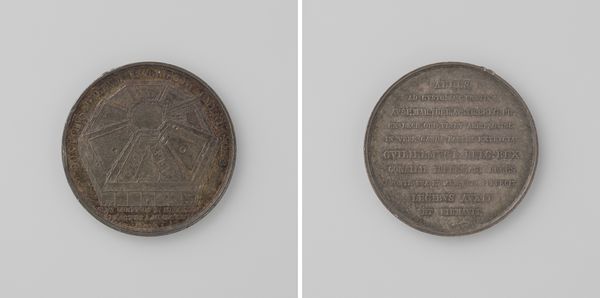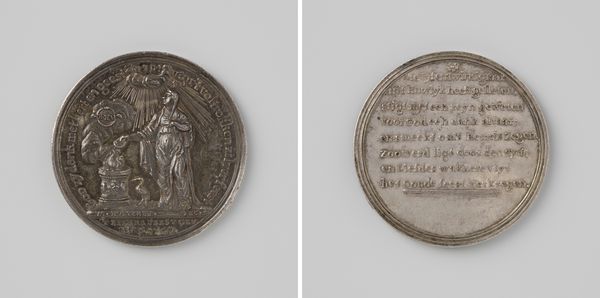
B. van Nes, vijftig jaar schout en secretaris van Schooten, Akendam, Schoterbos, Schotervliland, Haarlemmerlid en Hoffambagt, secretaris te Tetterode, Aalbertsberg en Vogelesangh 1768
0:00
0:00
Dimensions: diameter 4 cm, weight 21.28 gr
Copyright: Rijks Museum: Open Domain
Curator: Well, here we have an engraving dating back to 1768, currently residing in the Rijksmuseum. It commemorates B. van Nes, specifically celebrating his fifty years as a schout and secretary across several locations. Editor: My first impression is somber, almost melancholic. The detailed text on one side contrasts sharply with the rather bleak scene on the other—a landscape dominated by what appears to be a fallen tree and fragmented structures. It speaks to a certain…impermanence. Curator: The imagery is fascinating when we unpack the symbolism within that landscape. Notice how the fallen tree and the broken wheel alongside "GOD HEEFT HET L. GEZEEGEND," implying God has blessed it. Perhaps, these symbols evoke both resilience and divine providence amid worldly transience. Editor: Right, and the text—almost a dedication, serves a very public function, right? It marks and celebrates van Nes' long tenure, thus solidifying his place within the local historical narrative. So, beyond the religious elements, you see a more pragmatic aspect. Curator: I absolutely do, and this also offers layers to think about concerning local politics. How, by connecting him to divine blessing, that very position itself, beyond the individual office holder, might itself be further endowed with authority. Editor: Hmm, do you think there’s also a contrast happening in the very making of this item? I mean the durable, cold, metallic material feels contradictory alongside themes like blessing, providence, decline or the passage of time, which would be better conveyed in a drawing perhaps, no? Curator: Maybe that contradiction you see helps reinforce how public memory gets shaped. Consider how the longevity and permanence of the engraving might serve as its own metaphor. Think of an emblem. Editor: Yes. One way of looking at the making of the symbolic and literal meaning of a very prominent local figure, the values which underpin that kind of position and that specific place in history. That is not, it seems to me, just a happy chance of time... Curator: So in that light it can almost be considered as a Baroque artifact, one that uses emotional messaging, bold statements and a bit of rhetorical showmanship, though adapted to the medium of engraving and this context in 18th century Netherlands! Editor: Well, thank you, I have some ideas on the politics of imagery at play in eighteenth-century Haarlem, hopefully to carry me forwards. Curator: Likewise. It will continue to add dimensions to how I perceive symbols of perseverance, I think.
Comments
No comments
Be the first to comment and join the conversation on the ultimate creative platform.
